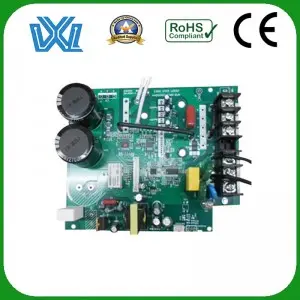In electronics manufacturing, printed circuit boards (PCBs) play a vital role in providing a solid foundation for various electronic components and circuits. As PCB manufacturing and assembly continues to evolve, it is critical for manufacturers to understand the concept of PCB percentage and how to calculate it accurately. This blog aims to shed light on this topic and provide insights on maximizing PCB yield.
Understanding PCB Percentages:
PCB percentage refers to the yield rate of the PCB production process, indicating the proportion of functional PCBs produced to the total number of PCBs manufactured or assembled. Calculating PCB percentage is critical for manufacturers as it reflects the efficiency and quality of the manufacturing process.
How to calculate PCB percentage:
To calculate PCB percentage, you need to consider two main factors: the number of functional PCBs and the total number of PCBs manufactured or assembled in a particular production run.
1. Determine the number of functional PCBs: This refers to the PCBs that have passed all quality control tests and meet the required standards. Let’s say you produced 100 PCBs, and after thorough testing, 90 of them were found to be fully functional.
2. Calculate the PCB percentage: Divide the number of functional PCBs by the total number of PCBs manufactured or assembled, then multiply the result by 100 to get the PCB percentage.
PCB Percentage = (Functional PCB Quantity / Total PCB Quantity) * 100
Using the previous example, the calculation is: (90/100) * 100 = 90%
Maximize PCB Yield:
Achieving a high PCB percentage is ideal for electronics manufacturers as it directly impacts their profitability and customer satisfaction. Here are some strategies for maximizing PCB yield:
1. Implement robust quality control measures: Ensure that every PCB produced is thoroughly tested to detect any defects or problems early. This allows timely correction and reduces the number of faulty PCBs.
2. Optimizing your manufacturing process: Continuously evaluate and improve your manufacturing process to minimize errors, reduce production time, and improve overall yield. Consider investing in advanced PCB manufacturing and assembly technologies to improve efficiency and accuracy.
3. Strengthen the training of operators: conduct comprehensive and regular training for the operators involved in the PCB production process. A well-trained operator is less likely to make mistakes, resulting in a higher PCB failure rate.
4. Employ Statistical Process Control (SPC) techniques: Implementing SPC techniques allows you to monitor and control every aspect of production, ensuring consistency and minimizing variation. SPC helps identify potential problems early so corrective actions can be taken before significant yield loss occurs.
in conclusion:
Calculating PCB percentage is critical for manufacturers to evaluate the efficiency of their production process. By understanding how to calculate and increase PCB yields, manufacturers can reduce waste, increase profitability, and deliver high-quality PCBs to customers. Implementing robust quality control measures, optimizing manufacturing processes, enhancing operator training, and adopting SPC techniques are critical steps to achieve higher PCB yields. By continuously improving these aspects, electronics manufacturers can remain competitive in the dynamic world of PCB manufacturing and assembly.
Post time: Jun-30-2023

